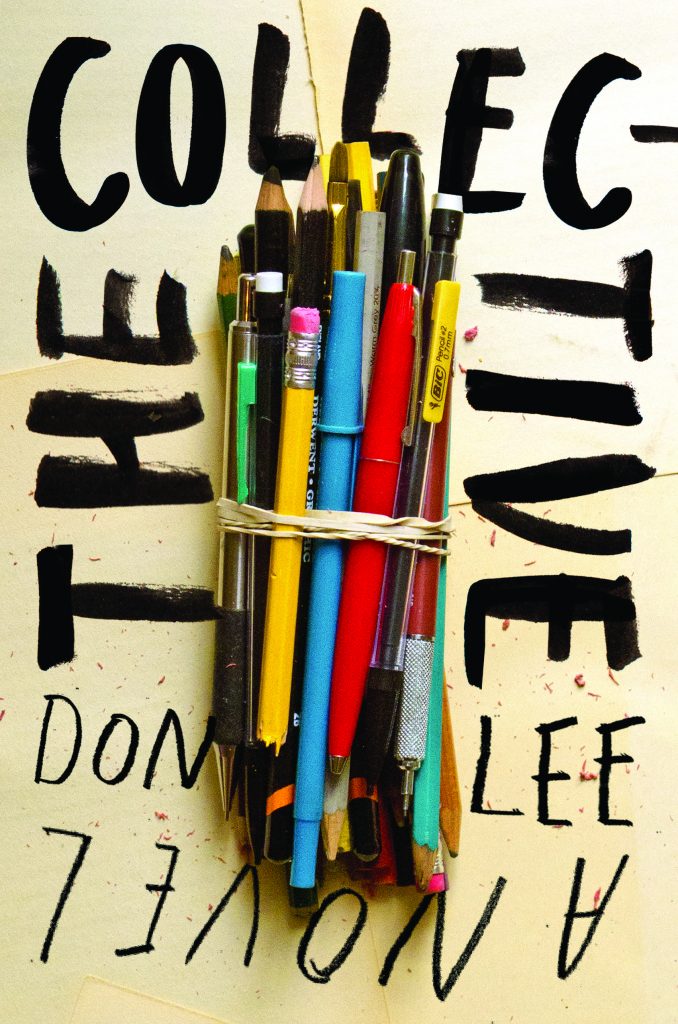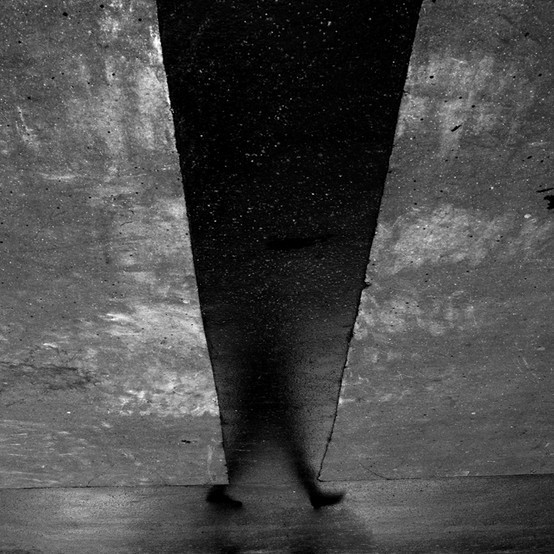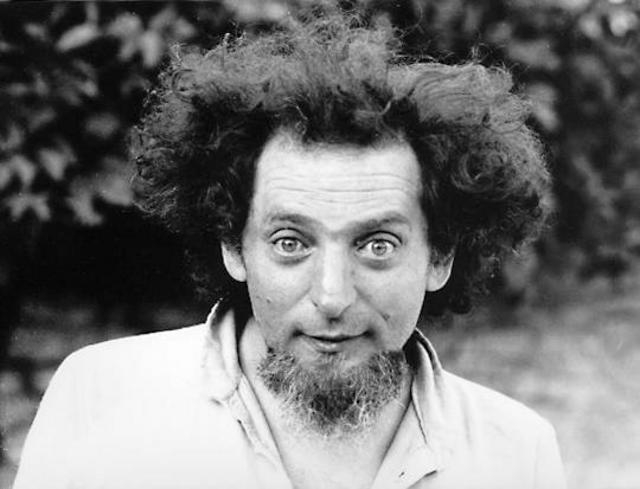What are the rules to calling yourself an Asian American artist? Are you merely required to be an Asian American creating art? Or must you follow the edicts of Joshua Yoon, the overwhelmingly ambitious ringleader of 3AC, who demands that his collective of Asian American artists change their manifesto to “specify that it’s art by and about contemporary Asian Americans?” In many ways, this question seems to be the primary preoccupation of Don Lee’s latest novel, The Collective, which features a triangle of friends, all Asian American and artistically minded, who first meet on the snowy white (in more ways than one) campus of Macalester College, Minnesota. But before we can properly meet all three protagonists, we are confronted with the death of one, Joshua, recounted to us by his former best friend Eric Cho. Although the motivations are foggy, Joshua apparently veers in front of a car while jogging, resulting in a fatal accident that also kills the driver and his young daughter. Shocked by the actions of his friend, who has become a stranger, Eric thinks back to a time when Joshua was destined for greatness. The novel then does the work of going back in time to show the reader how their friendship began and how it unraveled.
Both Korean-Americans and wannabe novelists—though only Josh has the talent for it—Eric and Josh are each other’s foils. Josh is the self-centered genius; wildly offensive, narcissistic, needy, and manipulative. Upon first meeting Eric, Josh breaks out into a monologue where he describes white women as, “boarding school shiksas, frosty Mayflower mungie cakes, pinkaloid pooty, Ritz cracker chirp-chirp Marshas,” which ends up grabbing the attention of everyone in the classroom. Eric then fills the role as the ever-weary sidekick, a little too capable and steady to succeed as an artist; the voice of reason, but not of genius. The third leg of the triangle is Taiwanese-American Jessica Tsai, who is never as fully colored-in as the other two. A painter and sculptor, she mainly serves as a target for Eric’s obsessive love.
Though we follow these three from young adulthood to middle-age, and suffer with them the disappointments that come with the years, their growth seems limited to receding hairlines and carpal tunnel syndrome. Josh never changes the pitch of his steamrolling monologues, never grows wiser or crazier. Reminiscent of Frank Chin’s wise-cracking, fast-talking characters in his plays, “The Chickencoop Chinaman” and “The Year of the Dragon,” Josh talks like no one else can. He regurgitates Kierkegaard, Beastie Boys, and Pynchon without seeming to stop to breathe, let alone to think. He is unapologetically misogynistic and even, in his conviction that Asian Americans can only write about being Asian American, racist. What is most unsettling, however, is how complicit the novel feels in not quelling Josh’s most problematic implications. The female characters are hare-brained dilettantes, racists with yellow fever, or self-destructive girls with daddy issues. Even Jessica, who is meant to be the exception—itself a problematic assumption—ultimately falls short of her male counterparts.
But perhaps, one can argue, this is the sacrifice that has to be made when tackling the feminization of the Asian-American male. Chin, in his plays and his critical essays, was also woefully misogynistic, because he first had to establish the possibility of Asian male masculinity before he could deconstruct it. Yet Chin was transparent about his preoccupation, and hyper-focused in the execution of his message. If not apologetic, at least Chin was clear about what his mission statement was. Lee, on the other hand, has other issues to juggle, leaving the questions of masculinity and power to grow pervasive the longer they go unasked and unexamined. When Eric is dumped by Marielle, an ex-alcoholic who gradually finds his “kindness” suffocating, she is instantly labeled as a manipulative user. What is never criticized, or even noted, is how Eric manipulates her with his niceness, and how he wedges himself into her life by buying her furniture, helping her move, going to AA meetings with her, and how he tries to guilt Marielle into having sex with him again after they break up by continuing his nice-guy act. Likewise, Josh’s interactions with women are also passively pardoned, and even condoned. His tendency to date women for only three weeks is turned into a joke, a personality quirk. When one of his dates, a Vietnamese-American artist in the 3AC collective, rightfully complains that Josh “just lies there. He doesn’t care about satisfying me,” she comes across as shrewish and paranoid, as she immediately accuses, “You guys put this whole thing together just to get laid.”
So how responsible is the artist for the art he creates? It would be unfair not to mention that Lee attempts to tackle thorny subjects and cover a large amount of thematic ground. The life and death (both literal and metaphorical) of an artist is perhaps the strongest and most interesting thread throughout. Similar in endeavor is Meg Wolitzer’s novel The Interestings, published less than a year after Lee’s. In many ways, Wolitzer’s novel about a group of relatively privileged, artistically minded teenagers, the breaking apart of friendship circles, the meaning of “talent,” and the nature of art, is superior to Lee’s. Her characters are more vivid, more like “real people,” and her exploration of envy, competition, and knowing when to give up the dream is more expansive, and therefore more realized. But the largest difference is that Wolitzer’s characters are white, and Lee’s are not.
This is the problem that Lee hits upon again and again, expounding upon the numerous variations that the issue of race and literature entrap Asian American writers. As Josh’s books fail to sell well, he comes to realize that “with all the screeds on racism, readers felt they were being preached to.” On the flipside, fellow writer Esther Xing, produces a novel with all white main characters and becomes a finalist for the Pulitzer Prize, which the novel notes is a “first for an East Asian American writer.” What becomes increasingly clear is that the novel’s prime preoccupation—the agenda of ethnicity and/in art—is also one that infects the novelist himself. How can he write about race when he lacks the language even to describe the experience? When what is beautiful in a white author’s hands turns preachy in his yellow fingers? How can he write about race when no one is interested; when a non-Asian audience feels antagonized and an Asian American audience feels reduced?
Lee’s prose is not pretty, or even particularly effortless. He tends towards wordy, didactic passages and heavy-handed, eye-rolling dialogue—one racist bar customer calls Eric a “Chinese wonton.” His characters remain characters, never fully embodying the human beings they wish to represent, and many seem to step in only to move the plot along or provoke an epiphany from the myopic narrator. But in failing to write movingly about ethnicity and/in art, Lee has also managed to succeed. Maybe somebody will one day successfully find the language to capture race with accuracy and beauty and, most importantly, familiarity. But until then, the effort to express this perfect combination will show through the lines on the page. Balls will be dropped, important questions will be ignored, and certain characters will be tone-deaf and unrelatable. Novelists are not superhuman. This is not to excuse Lee for the mistakes he has made, for, as he has tried to argue, artists have a responsibility to their audience. At the same time, not to acknowledge the unique set of difficulties an Asian American writer faces is also irresponsible. While Lee may have failed, in this reviewer’s eyes, he has failed valiantly, and not necessarily in vain. By adding to the small, but growing dialogue about ethnicity and/in art, he keeps the fight alive so that someday, someone, might get that knockout.
(For more on reviewing Asian American literature, see “My Preoccupation“)




